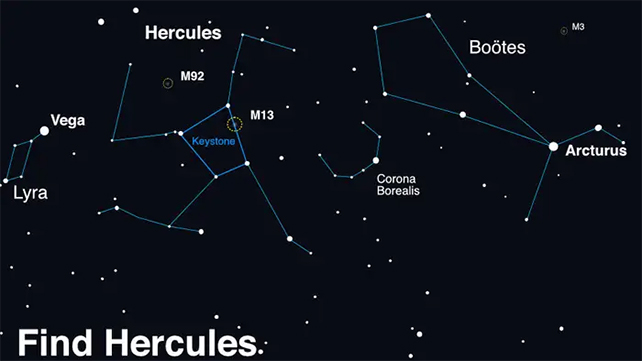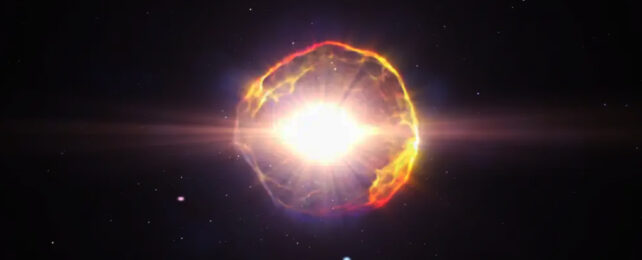A nearby exploding star is due to offer a spectacular show that could outshine our North Star this year.
The star, which is 3,000 light-years from Earth, is expected to burst in a gigantic explosion – known as a nova – in the coming months.
NASA said in a statement that the once-a-lifetime event could be so big that it can be seen by the naked eye. It should be visible for up to a week.
It will be "fun and exciting upcoming cataclysm," Bradley Schaefer, an astrophysicist at Louisiana State University, told The New York Times.
It adds to an already-packed agenda for skygazers this year.
This includes a full solar eclipse for those in the US or Canada in April, plus the rare, huge green comet which is already starting to be visible.
A 'hydrogen bomb' in the sky safely seen from light-years away
It all comes down to a nova called T Coronae Borealis. This cosmic blast happens when a tiny white dwarf – the core of a dead star – is locked in the orbit of a giant red star.
As the red giant tears apart nearby stars, the dense white giant absorbs the shrapnel, a mixture of hydrogen-rich materials that come its way. The tiny dead star then gradually becomes hotter until it reaches a breaking point when all that energy is released in a huge cosmic explosion – a so-called nova.
"These novae are basically hydrogen bombs," Schaefer told The Times.
No need to worry, however. T Coronae Borealis is much too far for that energy to harm us on Earth.
Humans have seen this nova lots of times before. It was first identified by astronomers in the late 1800s, and it bursts about every 80 years.
Indeed, the explosion heading our way would have taken place thousands of years ago, but requires all that time for the light to reach us.
Still, it's worth checking it out – T Coronae Borealis last shone in 1946 and this will be the last viewing opportunity before the early 2100s.
How to see it
To make sure you don't miss the nova, keep an eye out for updates from NASA. A surefire way to do this is to sign up to the @NASAUniverse channel on X.
In the meantime, get used to seeing the "before" shot of this cosmic event.
Look out for the shining stars Vega and Acturus to locate the Hercules constellation. Nearby is an arc of four visible stars called the Corona Borealis. That's where you'll spot the nova when it bursts.

When you get the alert from NASA, check out the weather and Moon forecast. The closer you can get to a cloudless and Moon-less night, the better.
As with any stargazing opportunity, it's best to head away from city lights and find a quiet field in the countryside where you can lay back and look straight up to the sky.
Plan to go out in the last hours before sunrise to get the best view of the nova.
You can use a star map app on your phone to find the constellation. But be wary – looking at your phone will mean you will need to give your eyes about 30 minutes to fully adjust to the darkness and let the stars shine through.
If you're lucky, you may be able to combine this stargazing trip with other viewing opportunities.
NASA predicts a total solar eclipse will sweep Canada and the US on April 8.
At the same time, the green comet 12P/Pons-Brooks has started coming into view from Earth. It should become just about bright enough to see with the naked eye within the next month or so.
This article was originally published by Business Insider.
More from Business Insider: